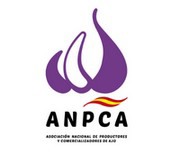According to an analysis carried out by the National Association of Garlic Producers
and Marketers (ANPCA), the largest Spanish and European association of garlic producers and marketers, the area devoted to garlic production in 2024 decreased by around 14% over 2023. The decrease was more accentuated in purple garlic, which has fallen below 40% of the total cultivated area for the first time. Last year, the area decreased by 17%. Thus, in the past two years, the area has fallen by more than 30% compared to the area cultivated in 2022.
However, according to the association's records, the total final marketable production has remained similar to that of 2023 thanks to an increase in yields over the previous season. The product's quality is good as it's been favored by favorable weather conditions throughout the season. Only a few batches of the Spring garlic variety were affected in June by some localized storms, which were less significant than last year.
In the international market, demand is very calm, with fewer operations than expected due to competition from traditional operators like China and new operators such as Egypt and Turkey. Brazil is one of the main historical markets for Spanish garlic. However, its demand for Spanish garlic has drastically decreased as its local production has increased significantly. This year, China, the main operator in the international market, is offering good quality garlic at very competitive prices.
The association is concerned about the continuous decrease, campaign after campaign, of the area devoted to purple garlic production and encouraged Spanish garlic producers to continue betting on this autochthonous variety "that provides a much appreciated competitive advantage in international markets."
ANPCA has started a series of actions to improve the situation of the crop, such as demanding integrated production in the main garlic-producing autonomous community of Spain, Castilla-La Mancha, to implement sustainable production that is more respectful of the environment.
Regarding international trade, the ANPCA wants the sector to request the European Commission's DG TAXUD clarity regarding the TARIC codes on which garlic is imported into the EU. The goal is to identify the tariff items corresponding to each product to prevent fresh garlic from being introduced to the EU through the item corresponding to frozen garlic to avoid paying the deterrent tariffs established in the European Union for this crop.
For more information: 
Luis Fernando Rubio
ANPCA
Centro de Empresas, Oficina 3,
Calle Julio Verne, 3. Aptdo 66
16660 Las Pedroñeras. Cuenca
Tel: +34 638103910
Email: lfrubio@anpca.es
www.anpca.es
